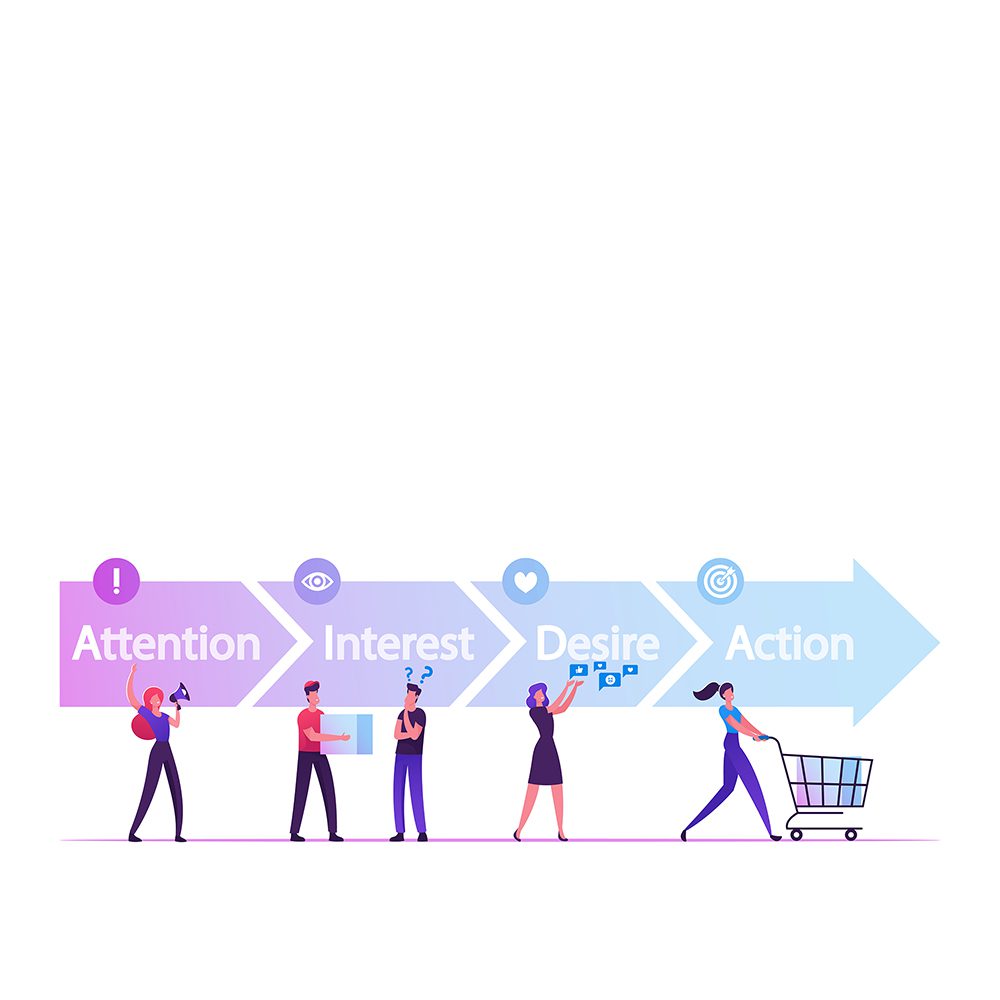What exactly is the AIDA model?
The goal of advertising is to persuade customers to buy or use what your organisation has to offer. According to the AIDA model, when selecting whether to acquire a product, a potential consumer passes through four phases, which correspond to the four phases of the AIDA model. The abbreviation is:
- Awareness
- Interest
- Desire
- Action
As a result, it denotes four goals of strategic communication measures inside the marketing framework.
St. Elmo Lewis, an American advertising advocate, is credited with the invention of the AIDA model. In 1898, he devised the three-part formula: capture attention, keep interested, and build desire. He later introduced a new step known as getting action.
Lewis’ formula, which was originally devised to structure sales conversations, was quickly implemented in other aspects of marketing. AIDA is still one of the most well-known advertising research models today. The model is an intrinsic element of school and university courses, and it is still utilised as a rule of thumb in advertising practice for building and assessing web resources. Even though the model is well-known, its significance is sometimes contested.
How does AIDA work?
Assuming that brand awareness is primarily achieved through advertising and marketing, the AIDA model (also known as the AIDA formula, AIDA idea, AIDA principle, or AIDA schema) provides explanatory methods to how advertising and other communication strategies influence brand choices.
According to the AIDA model, advertising must fulfil four communication goals in order to move potential buyers from the stage when they are initially aware of a product to the purchase stage. As a result, the AIDA method falls into the category of hierarchical advertising models, which are based on a linear sequential process of the buying decision process, in which clients go through a succession of cognitive and emotive phrases that end in a purchase.
What is the AIDA strategy?
The AIDA model consists of four distinct stages that attract interested consumers who are considering purchasing a product or service.
- Attract attention: The product must capture the consumer’s attention. This is accomplished through the use of advertising materials. It is an example of an “eye-catcher.”
A dazzling window, a fantastic YouTube clip, a themed email, or a graphic on a landing page are all examples.
- Maintain interest: During the first phase, the potential customer’s attention is captivated; their interest in the product or service should be heightened.
For example, thorough product information is offered, such as the product description on a website, a product brochure or flyer, pictures, or a video clip of the product.
- Arouse desire: Once the consumer’s interest in the product has been piqued, it is the seller’s responsibility to persuade the buyer that they want to acquire these goods. In the best-case scenario, the marketing of the product itself inspires a desire to buy.
For example, the vendor presents specific instances of the benefits of the product or service, taking into account the target group’s everyday activities. A bullet point list in an online store might pique the buyer’s interest. An advertising medium that particularly targets the customer’s emotions might also arouse this urge to buy.
- Take action: Once the urge to buy has been ignited, it must be translated into action, namely the purchase.
In the case of online stores, this would eventually be the shopping cart procedure, which leads a customer to a conversion.
This is why AIDA is the best marketing practice for every single business.
How is AIDA put to use?
For almost a century, the AIDA model has moulded perceptions of marketing and sales methods. The formula is still used in basic marketing textbooks today. AIDA is also used in public relations to plan and assess the efficacy of public relations initiatives, and it still gives useful information for the study of advertising messages. The simplicity and flexibility of this basic formula’s application potential in fields other than store-based or stationary sales are its main advantages. In e-commerce, for example, the four parts of the AIDA formula may be used to assess the efficacy of product display in an online store.
Get in touch with The Social Lions – a digital marketing agency in Mumbai to know and understand more about why AIDA is the best marketing practice for every single business.
